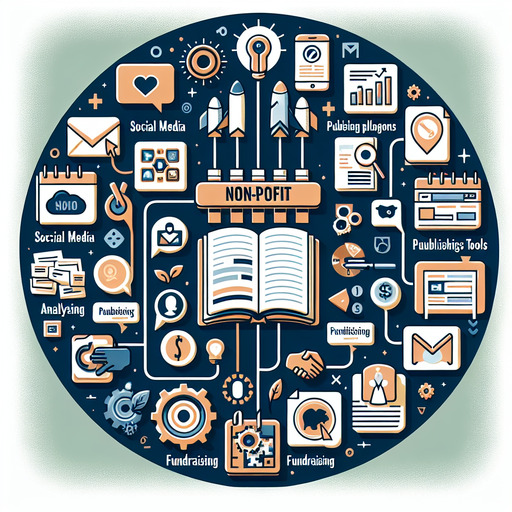
-
Table of Contents
Discover the essential Non-Profit Marketing Tools you need to succeed! Learn more here.
Introduction
Non-profit marketing tools are essential resources that help organizations effectively communicate their mission, engage with their audience, and drive their fundraising efforts. These tools encompass a wide range of strategies and technologies, including social media platforms, email marketing services, content management systems, and donor management software. By leveraging these tools, non-profits can enhance their outreach, build stronger relationships with supporters, and ultimately achieve their goals more efficiently. Understanding and utilizing the right marketing tools is crucial for non-profits to succeed in a competitive landscape, ensuring they can maximize their impact and continue to serve their communities effectively.
Non-Profit Marketing Tools: What You Need to Succeed
In the ever-evolving landscape of non-profit organizations, effective marketing is crucial for success. Non-profits must not only raise awareness about their causes but also engage donors, volunteers, and stakeholders. To achieve these goals, leveraging the right marketing tools is essential. These tools can help streamline operations, enhance outreach efforts, and ultimately drive the mission forward. Understanding the array of available marketing tools and how to utilize them can make a significant difference in a non-profit’s impact.
One of the foundational tools for non-profit marketing is a robust Customer Relationship Management (CRM) system. CRMs like Salesforce Nonprofit Cloud or Bloomerang are designed to manage donor relationships, track interactions, and analyze data. By centralizing information, these systems enable non-profits to personalize communication, segment audiences, and tailor campaigns to specific donor preferences. This level of customization not only fosters stronger relationships but also increases the likelihood of donor retention and recurring contributions.
Transitioning from CRM systems, email marketing platforms are another indispensable tool. Services such as Mailchimp or Constant Contact allow non-profits to create, send, and track email campaigns with ease. These platforms offer templates and automation features that save time and ensure consistent messaging. Moreover, email marketing remains one of the most cost-effective ways to reach a large audience, making it an ideal choice for non-profits with limited budgets. By regularly updating supporters on progress, upcoming events, and donation opportunities, non-profits can maintain engagement and drive action.
In addition to email marketing, social media management tools play a pivotal role in modern non-profit marketing strategies. Platforms like Hootsuite or Buffer enable organizations to schedule posts, monitor engagement, and analyze performance across various social media channels. Given the widespread use of social media, these tools help non-profits amplify their message, reach new audiences, and foster community engagement. Furthermore, social media campaigns can be tailored to highlight success stories, share impactful visuals, and encourage peer-to-peer fundraising, thereby expanding the organization’s reach and influence.
Another critical component of non-profit marketing is content creation and management. Tools such as Canva for graphic design and WordPress for website management empower non-profits to produce high-quality, visually appealing content. Canva offers user-friendly design templates that can be customized to create eye-catching graphics for social media, newsletters, and promotional materials. Meanwhile, WordPress provides a flexible platform for building and maintaining a professional website, which serves as the central hub for information, donations, and volunteer sign-ups. A well-designed website not only enhances credibility but also improves user experience, making it easier for supporters to engage with the organization.
Moreover, analytics and reporting tools are essential for measuring the effectiveness of marketing efforts. Google Analytics, for instance, offers insights into website traffic, user behavior, and conversion rates. By analyzing this data, non-profits can identify what strategies are working and where improvements are needed. This data-driven approach ensures that resources are allocated efficiently and that marketing efforts are continuously optimized for better results.
Finally, collaboration and project management tools such as Trello or Asana facilitate teamwork and ensure that marketing campaigns are executed smoothly. These platforms allow teams to organize tasks, set deadlines, and track progress, thereby enhancing productivity and accountability. Effective collaboration is particularly important for non-profits, where resources are often limited, and maximizing efficiency is crucial.
In conclusion, the right marketing tools can significantly enhance a non-profit’s ability to achieve its mission. From CRM systems and email marketing platforms to social media management, content creation, analytics, and project management tools, each plays a vital role in building awareness, engaging supporters, and driving impact. By strategically leveraging these tools, non-profits can navigate the complexities of marketing and ensure long-term success.
Q&A
1. **What are some essential non-profit marketing tools needed to succeed?**
– **Email Marketing Platforms**: Mailchimp, Constant Contact
– **Social Media Management Tools**: Hootsuite, Buffer
– **Content Management Systems (CMS)**: WordPress, Wix
– **Customer Relationship Management (CRM) Software**: Salesforce, Bloomerang
– **Graphic Design Tools**: Canva, Adobe Spark
– **Fundraising Platforms**: GoFundMe, Classy
– **Analytics Tools**: Google Analytics, Facebook Insights
– **Event Management Software**: Eventbrite, Cvent